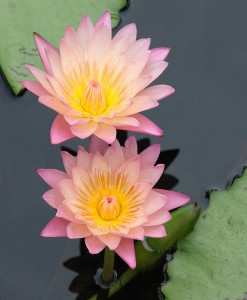 We had the Sunday Introduction to Meditation Class at Yoga Bliss yesterday. We continued working with the four foundations of mindfulness inspired by the teachings in B. Alan Wallace’s Minding Closely: The Four Applications of Mindfulness. I think of Alan’s book as a meditation “technology” manual. He describes how to “do it” and includes a narrative that fills in the background and purpose of what we’re doing. Like last week, we started by establishing awareness in the sensory field of the body and then we shifted attention to the domain of mental experience: ideas, thoughts, images, desires, emotions and aspirations.
We had the Sunday Introduction to Meditation Class at Yoga Bliss yesterday. We continued working with the four foundations of mindfulness inspired by the teachings in B. Alan Wallace’s Minding Closely: The Four Applications of Mindfulness. I think of Alan’s book as a meditation “technology” manual. He describes how to “do it” and includes a narrative that fills in the background and purpose of what we’re doing. Like last week, we started by establishing awareness in the sensory field of the body and then we shifted attention to the domain of mental experience: ideas, thoughts, images, desires, emotions and aspirations.
It seems the moment I intend to observe thought or memory, they simply vanish. Alan suggests refreshing attention upon breathing in and relaxing more deeply while breathing out. He repeatedly recommends relaxing. When relaxing, thoughts, memories, imaginings seem to arise. We are to observe just this process of arising, subsisting and fading away. It’s like the subtle dance we do when trying to follow the sensations of breathing without changing anything. We let go of control and allow our body, its inherent wisdom, to emerge. Alan talks about our need to control and also our ability to relinquish control. In this practice of shamatha (a sustained state of concentration or mental quiescence), we let go of trying to control experience and simply observe being. He asks what greater gift can we give someone than our full attention.
If we give our attention, there is the possibility of exercising wise judgment. What would be of greatest benefit? This is a personal choice that will not even be considered if attention is not given first. When we attend to a person or situation skillfully and closely, with no urge to control, sustaining awareness of what is actually present with clarity and stability, we can penetrate the reality of the situation. We will not react habitually by thinking of how to benefit ourselves.
I believe this is the quality of attention we bring to each other during Sunday practice. In our post meditation discussion, we discussed the nature of consciousness and spirit. I shared about a fascinating interview between On Being’s Krista Tippett and Dr. Sherwin Nuland, physician and author of How We Die and The Wisdom of the Body. Dr. Nuland graciously shared about his life’s work of tending to patients and struggling with depression. He was inspired to write about the wondrous workings of the body that continuously create stability out of instability – all the things that go “right” that could easily go wrong. He also talked about the nature of thought, consciousness and the human spirit:
Consciousness is only a kind of an awareness of our surroundings, an awareness of our emotions, an awareness of our responses. The human spirit is something much greater. The human spirit is an enrichment. It’s the way we use our consciousness to, I keep using this word, to synthesize something better than our mere consciousness, to make ourselves emotionally richer than we in fact are.
In meditation practice we can develop intimacy with the nature of our minds. We start just by observing what happens without control. From here, we can recruit our amazing capacity to think, explore and question our sense of our selves. Perhaps this is the opportunity for the enrichment that Dr. Nuland refers to. In sharing this experience we help one another – the attention we lend each other is like nourishing sunlight for the spirit. It only takes two.
